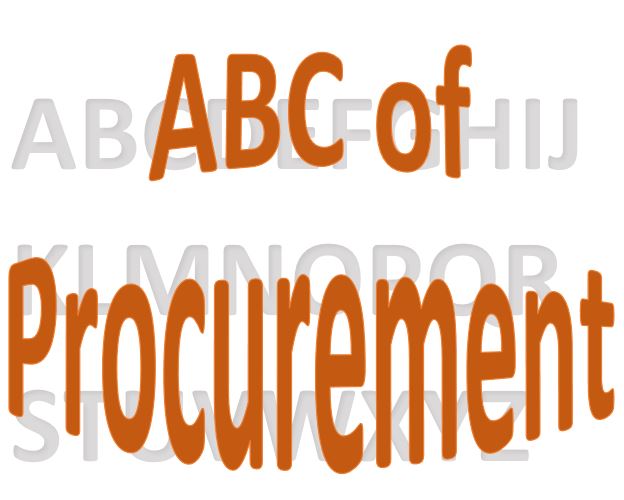Like many other terms in procurement and Supply chain, there is no universal definition of Strategic Sourcing. If we try to compare it with the Sourcing Strategy, it gets even worse. I have summarized some thoughts by companies that are considered as an authority in the science of procurement and Supply Chain. They differentiate quite a bit, so I will leave it for you to come to your conclusion. Links to the original articles are at the bottom of the text if you wish to dive in deeper.
Strategic sourcing as a process
Let us start with the simplest example. An article by SAP Ariba, creators of one of the widely used sourcing and procurement tools, considers strategic sourcing as a process. As per them the four steps of the process are:
- Spend analysis
- Contacting suppliers and looking for quotes
- Negotiations and contracting
- Process optimization
Sounds a lot like the Source – to – pay process, which we discussed earlier in the article you can find here? As per them, the strategic part is about streamlining and digitizing the process. Understandable, as they are selling software which is arguably the best in the world in doing exactly this. In the article you can find here we discussed as well the procurement positions. And this described above somehow better suits the position of the Sourcing manager, not the Strategic procurement manager. Also, if we take the definition of strategy by Google as
“…a plan of action designed to achieve a long-term or overall aim”,
somehow it does not fit in.
The next definition is by the Procurement and Purchasing centre, a procurement training institution. While it still considers strategic sourcing as a process, it ads some sort of strategy development. Their six steps of strategic sourcing are:
- Profile the category
- Supply Market analysis
- Develop the strategy
- Select the sourcing process
- Negotiate and select suppliers
- Implement and integrate
- Benchmark and track results
We can see that the first three steps are about analysis and strategy. They suggest checking and evaluating the product and market before moving on into the request for a quote. And then to choose the approach to the market based on the gathered data.
Strategic sourcing as a strategy
This is a complicated sentence. Strategic sourcing as a strategic approach to sourcing. Instead of focusing on the “how” of sourcing, here we focus on the “what”.
As per the University of Michigan, strategic sourcing is a continuous process, focused on the Total cost of ownership. Now we are talking about going wider than the price and the supplier selection. The objectives of Strategic sourcing become:
- Reduction of cost while maintaining or improving the quality
- Delivering total value while using all possible options, not only price
- Leverage the organization’s total spend and supplier relationships
- Share best practices and created standardized terms and conditions across the organization
There is more. The Harvard Business review article looks at Strategic sourcing from a different angle. In their article “Strategic Sourcing: From Periphery to the Core” they focus on creating a competitive advantage by using strategic sourcing. Companies shall focus on only one function, which is the core of their business. Everything else needs to be outsourced. And this is the point where procurement comes into play. Strategic sourcing is, as per them, about finding and developing subcontractors. But not in the old-fashioned way, where the company issues strict rules and specifications. This time it is about developing them and having close cooperation. Companies should create outsourcing (sourcing) strategies and get into long term relationships with suppliers. This will allow them to focus on their core strength. On the supplier side, long-term support allows them to invest and specialize. In the end, it is a win-win.
Strategic sourcing strategy
The last article that addresses the issue is from CIPS. Firstly, they separate sourcing into
- Reactive, where purchasing starts only once the request is received, without any planning
- Tactical, where the purchase is planned but can not be done in advance.
- Strategic, which is a planned and proactive purchasing process.
The strategic sourcing strategy development takes into consideration aspects that tackle procurement, for example:
- The overall procurement and Supply Chain strategy
- Position of the procurement department in the organization and relationships with stakeholders
- Historical spend analysis and future estimations
- Historical price and consumption trends and cycles
- Market analysis
- Creating sourcing strategy options
- The sourcing process
It is an approach that takes into consideration anything that could influence the procurement process. In an ideal case, all procurement should undergo the same process.
My personal opinion is that strategic sourcing should focus on the long-term planning of procurement activities. The job of the strategic sourcing team is to do the need and market analysis. Based on this, the management can determine the way suppliers will be sourced, as well as the length of the contract. Strategic sourcing needs to focus on developing long term relationships with the strategic suppliers. But they should not be involved in the day-to-day operations. As the old saying suggests: “operational always trumps the strategic”.



Pingback: Strategic Procurement vs. Procurement Strategy